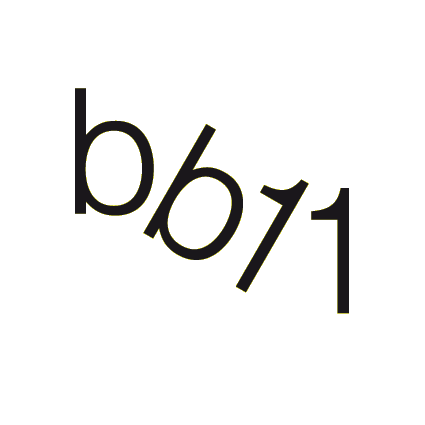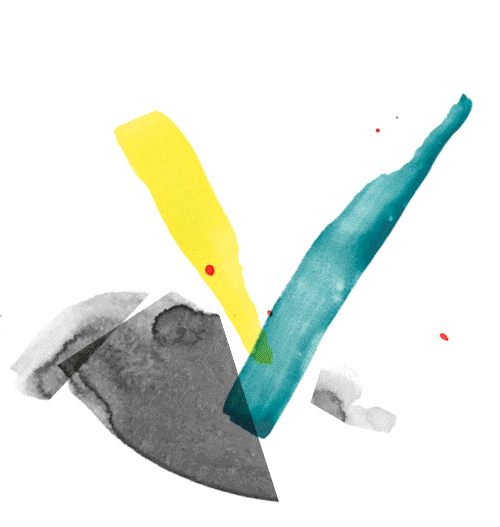

Sign up for our newsletters. You can change the settings or unsubscribe at any time.
Thank you for your subscription. We have sent you an e-mail with a confirmation link.


exp. 1
exp. 2
exp. 3

Brenda V. Fajardo
Venue: KW Institute for Contemporary Art
Brenda V. Fajardo
Born 1940 in Manila, PH – lives and works in Quezon City, PH
Brenda V. Fajardo is best known for her complex works on paper that intertwine the social and political realities of the Philippines. Some of her finest works present their iconography within the schema of the tarot—a central image is bordered with a reading of the event, in which the artist divines the outcome and its possibilities. Appropriating the original tarot symbolism into a deck of images she calls Baraha ng Buhay Pilipino (Cards of the Lives of the Filipinos), Fajardo embeds the imagery within the local and power within the feminine.
Layered with gold leaf, the early works in Fajardo’s tarot series focus on the Filipino people and their plight, particularly that of women. Fajardo frequently includes the names of specific individuals in her titles, integrating these into the narratives that she writes as a backdrop to the pieces. This act of naming absolves Fajardo’s works from simply being representative of circumstances and events; instead each becomes an individuated experience. This group of works seems to have foretold the troubles in the Philippines, which continue to this day. Take, for example, the work Siya ang Dragon ng Kadiliman at Kasinungalingan-Gahaman [He is the Dragon of Darkness and Lies – Avaricious, 2018], which was first drawn in 2000, the year of the Metal Dragon. In this “reading” Fajardo divines the destiny of the Philippines at the turn of the century, describing a complicated world without hope (the card Daigdig or World), which is under the spell of The Magician (Salamankero). Fajardo appeals to Filipino citizens to acknowledge the full extent of the corruption in their country, and through struggle and resistance calls on Lady Justice (Katarungan) to lift the sickness and pain inflicted upon the people on the Day of Judgement (Paghuhukom).
These dense and intricate tableaus utilize the Baraha ng Buhay Pilipino deck to provide a necessary, vigilant, and critical reading of the Philippine nation’s fate and its evolving present.
Joselina Cruz
THE MOBILIZATION
Nicolás Cuello
Text
Glossary of Common Knowledge
L’Internationale Online
Glossary
Expresiones de la locura: el arte de los enfermos mentales
Hans Prinzhorn
Monograph
COVID-19 VIDEOS
Carlos Motta
Video
Grupo Experimental de Cine en acción
Gabriel Peluffo
Drawing
Memorial to the Sinti and Roma Victims of National Socialism
Dani Karavan
Memorial
By using this website you agree to the use of cookies in accordance with our data privacy policy.

Brenda V. Fajardo
Venue: KW Institute for Contemporary Art
Brenda V. Fajardo
Born 1940 in Manila, PH – lives and works in Quezon City, PH
Brenda V. Fajardo is best known for her complex works on paper that intertwine the social and political realities of the Philippines. Some of her finest works present their iconography within the schema of the tarot—a central image is bordered with a reading of the event, in which the artist divines the outcome and its possibilities. Appropriating the original tarot symbolism into a deck of images she calls Baraha ng Buhay Pilipino (Cards of the Lives of the Filipinos), Fajardo embeds the imagery within the local and power within the feminine.
Layered with gold leaf, the early works in Fajardo’s tarot series focus on the Filipino people and their plight, particularly that of women. Fajardo frequently includes the names of specific individuals in her titles, integrating these into the narratives that she writes as a backdrop to the pieces. This act of naming absolves Fajardo’s works from simply being representative of circumstances and events; instead each becomes an individuated experience. This group of works seems to have foretold the troubles in the Philippines, which continue to this day. Take, for example, the work Siya ang Dragon ng Kadiliman at Kasinungalingan-Gahaman [He is the Dragon of Darkness and Lies – Avaricious, 2018], which was first drawn in 2000, the year of the Metal Dragon. In this “reading” Fajardo divines the destiny of the Philippines at the turn of the century, describing a complicated world without hope (the card Daigdig or World), which is under the spell of The Magician (Salamankero). Fajardo appeals to Filipino citizens to acknowledge the full extent of the corruption in their country, and through struggle and resistance calls on Lady Justice (Katarungan) to lift the sickness and pain inflicted upon the people on the Day of Judgement (Paghuhukom).
These dense and intricate tableaus utilize the Baraha ng Buhay Pilipino deck to provide a necessary, vigilant, and critical reading of the Philippine nation’s fate and its evolving present.
Joselina Cruz
Struggle as Culture: The Museum of Solidarity, 1971–73
María Berríos
Essay
Flávio de Carvalho: Fazenda Capuava
Archive of Lisette Lagnado
Photographs
Touching Feeling. Affect, Pedagogy, Performativity
Eve Kosofsky Sedgwick
Monograph
II: La Solidaridad va Más Allá de un Concepto. Entre las Curadoras de la XI Berlin Biennale
Lisette Lagnado, Agustín Pérez Rubio
Conversation
New Look
Flávio de Carvalho
Performance
Teatro da Vertigem
Monograph
By using this website you agree to the use of cookies in accordance with our data privacy policy.

Brenda V. Fajardo
Venue: KW Institute for Contemporary Art
Brenda V. Fajardo
Born 1940 in Manila, PH – lives and works in Quezon City, PH
Brenda V. Fajardo is best known for her complex works on paper that intertwine the social and political realities of the Philippines. Some of her finest works present their iconography within the schema of the tarot—a central image is bordered with a reading of the event, in which the artist divines the outcome and its possibilities. Appropriating the original tarot symbolism into a deck of images she calls Baraha ng Buhay Pilipino (Cards of the Lives of the Filipinos), Fajardo embeds the imagery within the local and power within the feminine.
Layered with gold leaf, the early works in Fajardo’s tarot series focus on the Filipino people and their plight, particularly that of women. Fajardo frequently includes the names of specific individuals in her titles, integrating these into the narratives that she writes as a backdrop to the pieces. This act of naming absolves Fajardo’s works from simply being representative of circumstances and events; instead each becomes an individuated experience. This group of works seems to have foretold the troubles in the Philippines, which continue to this day. Take, for example, the work Siya ang Dragon ng Kadiliman at Kasinungalingan-Gahaman [He is the Dragon of Darkness and Lies – Avaricious, 2018], which was first drawn in 2000, the year of the Metal Dragon. In this “reading” Fajardo divines the destiny of the Philippines at the turn of the century, describing a complicated world without hope (the card Daigdig or World), which is under the spell of The Magician (Salamankero). Fajardo appeals to Filipino citizens to acknowledge the full extent of the corruption in their country, and through struggle and resistance calls on Lady Justice (Katarungan) to lift the sickness and pain inflicted upon the people on the Day of Judgement (Paghuhukom).
These dense and intricate tableaus utilize the Baraha ng Buhay Pilipino deck to provide a necessary, vigilant, and critical reading of the Philippine nation’s fate and its evolving present.
Joselina Cruz
IV: How Fear Can Dismantle a Body. Vis-a-Vis with two of four curators of the 11th Berlin Biennale
María Berríos, Lisette Lagnado
Conversation
THE MOBILIZATION
Nicolás Cuello
Text
COVID-19 VIDEOS
Carlos Motta
Video
Struggle as Culture: The Museum of Solidarity, 1971–73
María Berríos
Essay
Weaving Solidarity
Renata Cervetto and Duygu Örs
Q&A
St Sara Kali George
Delaine Le Bas
Soundscape
By using this website you agree to the use of cookies in accordance with our data privacy policy.

Brenda V. Fajardo
Venue: KW Institute for Contemporary Art
Brenda V. Fajardo
Born 1940 in Manila, PH – lives and works in Quezon City, PH
Brenda V. Fajardo is best known for her complex works on paper that intertwine the social and political realities of the Philippines. Some of her finest works present their iconography within the schema of the tarot—a central image is bordered with a reading of the event, in which the artist divines the outcome and its possibilities. Appropriating the original tarot symbolism into a deck of images she calls Baraha ng Buhay Pilipino (Cards of the Lives of the Filipinos), Fajardo embeds the imagery within the local and power within the feminine.
Layered with gold leaf, the early works in Fajardo’s tarot series focus on the Filipino people and their plight, particularly that of women. Fajardo frequently includes the names of specific individuals in her titles, integrating these into the narratives that she writes as a backdrop to the pieces. This act of naming absolves Fajardo’s works from simply being representative of circumstances and events; instead each becomes an individuated experience. This group of works seems to have foretold the troubles in the Philippines, which continue to this day. Take, for example, the work Siya ang Dragon ng Kadiliman at Kasinungalingan-Gahaman [He is the Dragon of Darkness and Lies – Avaricious, 2018], which was first drawn in 2000, the year of the Metal Dragon. In this “reading” Fajardo divines the destiny of the Philippines at the turn of the century, describing a complicated world without hope (the card Daigdig or World), which is under the spell of The Magician (Salamankero). Fajardo appeals to Filipino citizens to acknowledge the full extent of the corruption in their country, and through struggle and resistance calls on Lady Justice (Katarungan) to lift the sickness and pain inflicted upon the people on the Day of Judgement (Paghuhukom).
These dense and intricate tableaus utilize the Baraha ng Buhay Pilipino deck to provide a necessary, vigilant, and critical reading of the Philippine nation’s fate and its evolving present.
Joselina Cruz
El primer nueva corónica y buen gobierno
Felipe Guamán Poma de Ayala
Chronicle
Glossary of Common Knowledge
L’Internationale Online
Glossary
Struggle as Culture: The Museum of Solidarity, 1971–73
María Berríos
Essay
Hatred Among Us
Lisette Lagnado
Essay
„Klaus Eckschen: Hörspiel“
Die Remise
Hörspiel
Solidarity and Storytelling. Rumors against Enclosure
María Berríos
Essay
By using this website you agree to the use of cookies in accordance with our data privacy policy.
By using this website you agree to the use of cookies in accordance with our data privacy policy.




